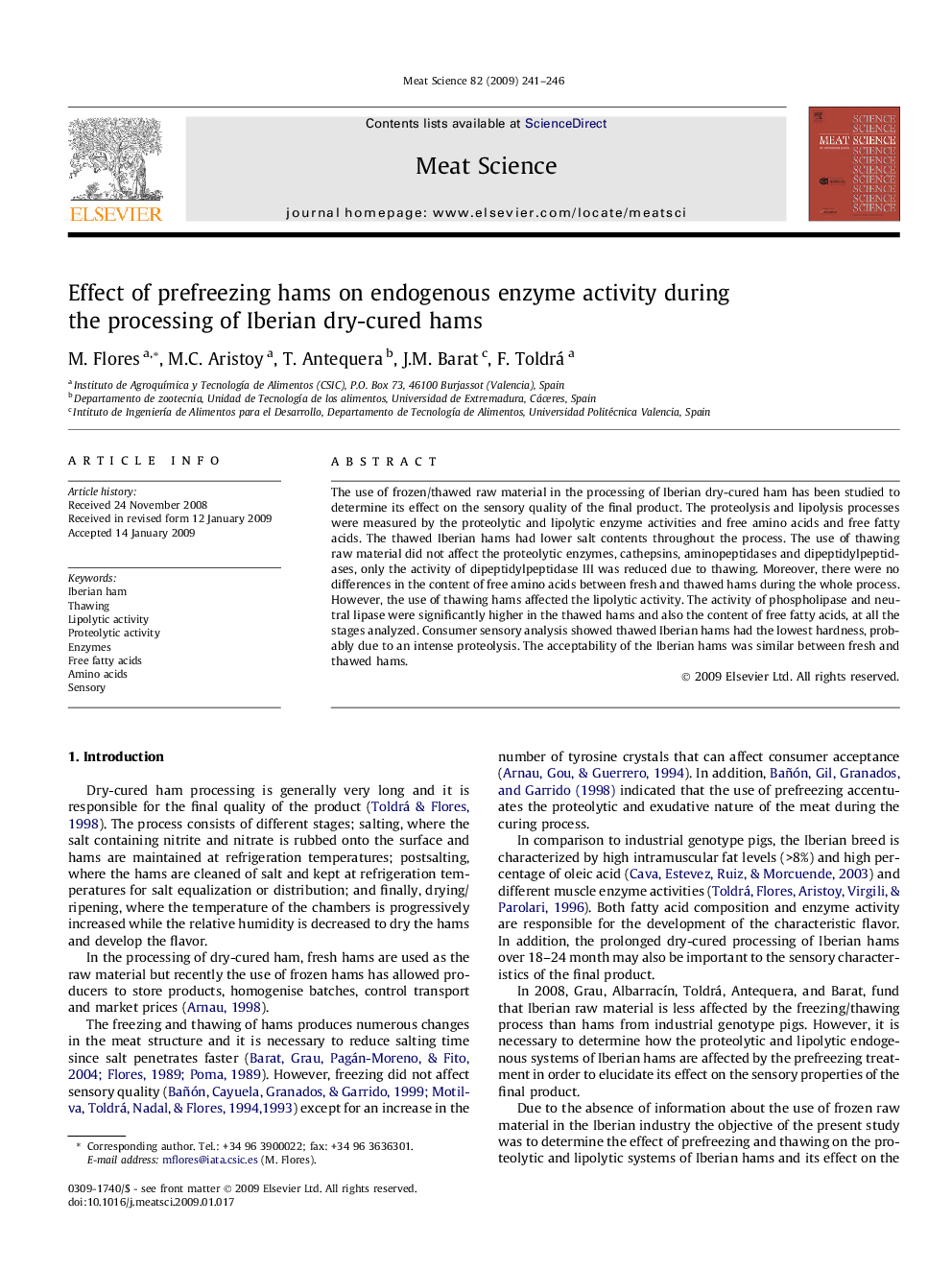| Article ID | Journal | Published Year | Pages | File Type |
|---|---|---|---|---|
| 2450991 | Meat Science | 2009 | 6 Pages |
The use of frozen/thawed raw material in the processing of Iberian dry-cured ham has been studied to determine its effect on the sensory quality of the final product. The proteolysis and lipolysis processes were measured by the proteolytic and lipolytic enzyme activities and free amino acids and free fatty acids. The thawed Iberian hams had lower salt contents throughout the process. The use of thawing raw material did not affect the proteolytic enzymes, cathepsins, aminopeptidases and dipeptidylpeptidases, only the activity of dipeptidylpeptidase III was reduced due to thawing. Moreover, there were no differences in the content of free amino acids between fresh and thawed hams during the whole process. However, the use of thawing hams affected the lipolytic activity. The activity of phospholipase and neutral lipase were significantly higher in the thawed hams and also the content of free fatty acids, at all the stages analyzed. Consumer sensory analysis showed thawed Iberian hams had the lowest hardness, probably due to an intense proteolysis. The acceptability of the Iberian hams was similar between fresh and thawed hams.
